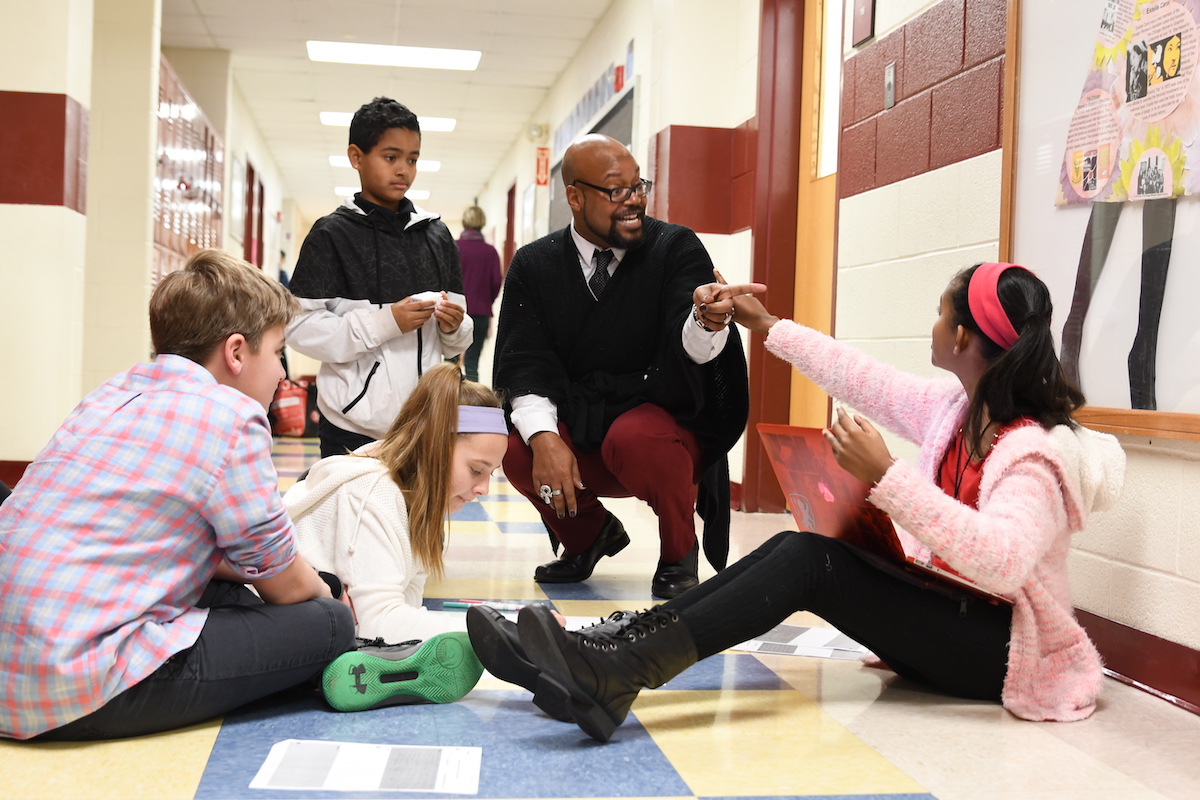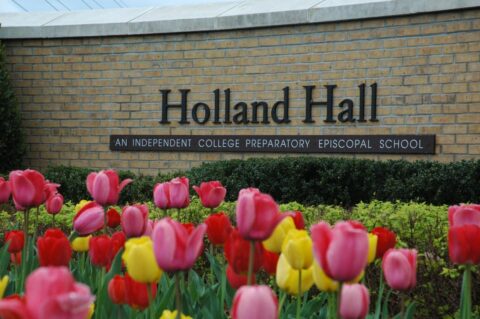By Rodney Glasgow
Editor’s Note: This article was originally published in Volume 2 of “Think Differently and Deeply” (2015).
I have begun my middle school Religion class the same way for all of the three years that I have been the teacher. Students pair up, and they discuss a given question with their partner. Tell your partner about your religion. What is your religion? How do you practice it? Then, they find another student, and they prepare to discuss a new question. How do you believe the world began? Three minutes later, they find a different student. Talk about a time when you experienced something that you could not explain. They switch partners again to discuss, What do you think God looks like? This continues for a few more rounds of questions, and ends with: How have you seen people using or practicing religion around you?
Although I start my class the same way every time, each time is a different experience. This exchange of stories and ideas between students is a novelty for each Religion section. Students present their answers to these questions to the whole class aided by a creative slideshow, and after each presentation the class must ask two questions of the student about something that interests them from what they heard. That begins our exploration of Genesis and the founding of Judeo-Christian beliefs.
When I created this opening unit, I surely had James Banks whispering in my ear. The transformation approach to curriculum development that he describes in his “Four Approaches to Multicultural Education” is evident here. The transformation approach restructures curriculum to include multiple perspectives. (1) It often involves doing what I did—throwing out the existing curriculum and reimagining the course altogether. The other three approaches all speak to some aspect of the foundations of multicultural education: the contributions approach (heroes and holidays), the additive approach (stand alone units and cultural days, weeks, or months), and the social action approach (using what is learned to actively address a current real world issue). As Sonia Nieto tells us:
“Multicultural education is a process of comprehensive school reform and basic education for all students. It challenges and rejects racism and other forms of discrimination in schools and society and accepts and affirms the pluralism (ethnic, racial, linguistic, religious, economic, and gender, among others) that students, their communities, and teachers represent. Multicultural education permeates the curriculum and instructional strategies used in schools, as well as the interactions among teachers, students, and parents, and the very way that schools conceptualize the nature of teaching and learning. Because it uses critical pedagogy as its underlying philosophy and focuses on knowledge, reflection, and action (praxis) as the basis for social change, multicultural education promotes the democratic principles of social justice.” (2)
Multicultural education is an idea born of the ’70s that gained popularity in the ’90s. More recently, the nomenclature has shifted as the philosophy has deepened. Instead of talking about multicultural education, which most confuse with simply addressing race in the classroom, educational leaders are now focusing on inclusive pedagogy.
Inclusive pedagogy or inclusive teaching describes instructional strategies used to create engaging learning environments. Inclusive teaching equips students to learn from differences in perspectives, learning differences, cultural and social backgrounds, and exceptionalities in the classroom. Practitioners of inclusive pedagogy vary course design and assessments to give students a number of ways to demonstrate their mastery of the course content and skills. Inclusive teaching brings students’ experiences into the classroom. The instructor not only delivers the content but also develops the students. (3)
Multicultural education’s main focus can be said to be on what we teach, where inclusive pedagogy’s main focus is on how we teach. Where multicultural education has been mainly applied to race and, in its more broad moments, gender, inclusive pedagogy encompasses the totality of an individual’s identity, including learning preferences and lived experience. Quite simply, inclusive pedagogy asks us to know the stories in the room and to use those stories to engage the learner thus deepening the learning.
Inclusive pedagogy is brain-based and research informed. It relies on the importance of relevance (4) and novelty (5) in creating learning and aiding memory storage and retrieval. Our brains fire up when we can say, “Here is how this relates to me,” or “Here is why I need to know this,” or “Here is where I can connect my story with this information.” Our brains become more alert in those moments when we are encountering information that we have not previously considered. In the faculty lounge, we call it the power of “whoa!” and “a-ha!”
I have experienced “whoa” moments and “a-ha” moments often in my classroom. In that first week of Religion class, there are always a few. I am thinking of the student who, in describing her own spiritual beliefs to the class, disclosed that she was a medium. You could feel the interest build in the room. Some students were thinking, “Whoa! A medium! I wonder if there are spirits in this room. Does she see them?” Other students were thinking, “Whoa! What is a medium?” Novelty walked right in the room and excited their brains, and the learning happened. One student raised his hand to ask her, “What is a medium?” She answered confidently. Another wanted to know when she discovered her abilities, and another wanted to know if she was frightened by it. A fourth student asked, “Why is it called a medium?” And here is where, as a teacher, relevance and shared experience comes in.
I sneakily asked, “Where else have we heard the word medium?” Students responded that items are often sized small, medium, or large. They then recalled that medium is another term for being in the middle, and they decided that a medium is someone who is in the middle of this world and the spirit world, able to communicate with both. They will forget many things about Religion 6. That will not be one of them! Now, when this class discusses what it means to be spiritual, or if miracles exist, or what happens after life, they will have a different perspective than their own to consider.
Inclusive pedagogy’s call for multiple perspectives as a learning tool is nothing new. Dewey, the great educational philosopher of the early 20th century, already told us that “…it is the office of the school environment to balance the various elements in the social environment, and to see to it that each individual gets an opportunity to escape from the limitations of the social group in which he was born, and to come into living contact with a broader environment.” (6) Indeed, Horace Mann, the Father of American Education, began this dialogue in the 19th century when he urged us to see education as the great equalizer of diverse experiences. Inclusive pedagogy is applicable to each classroom and every discipline. There is always space to broaden the perspective and widen the lens.
My middle school Religion class always ends the same way. Students write an essay or produce a work of art that explains how their thoughts about God have either changed or been solidified since the start of the course. And in that way, the class ends in a different place for each student that I, as their teacher, must recognize and honor. By releasing myself from being a “sage on the stage” to become a co-creator of educational opportunities with my students, everyone in my classroom is a better teacher and stronger learner.
Citations
1) J.A. Banks. An Introduction to Multicultural Education 2nd ed. (Boston 1999).
2) S. Nieto. Affirming Diversity: The Sociopolitical Context of Multicultural Education (2nd ed.). (New York 1996).
3) S. Radford-Hill. “Practicing Inclusive Pedagogy. (2014). https://www.luther.edu/ideas-creationsblog/?story_id=548097
4) University College London. “Novelty Aids Learning.” ScienceDaily (4 August 2006). www.sciencedaily.com/releases/2006/08/060804084518.htm
5) Bernard, S. (2010) http://www.edutopia.org/neuroscience-brain-based-learning-relevanceimproves-engagement
6) J. Dewey (1916). Democracy and Education. New York: Simon & Brown (1997).




